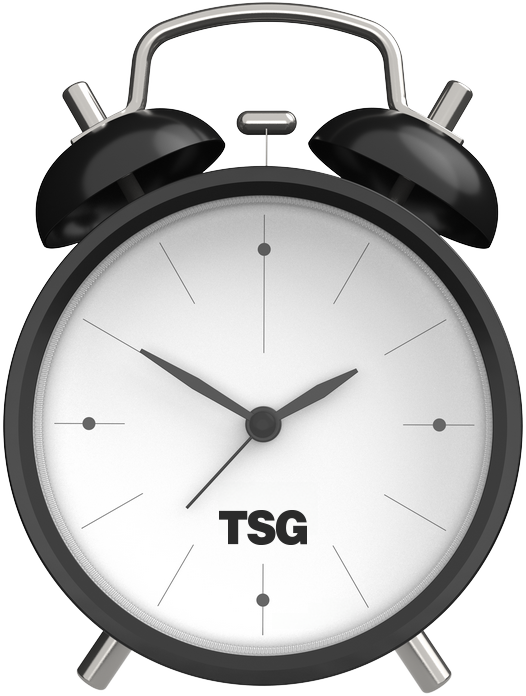To effectively manage your time and prioritize goals, you can use the Eisenhower Matrix to sort tasks by urgency and importance, implement ABC Prioritization for task ranking, set SMART Goals to clarify your objectives, block out dedicated time slots to enhance focus, and regularly review and adjust your priorities to stay aligned with your long-term ambitions. Applying these strategies will help you maximize productivity and adapt to new opportunities. Explore further to elevate your time management skills.
How to Prioritize and Manage Time Effectively?
To prioritize and manage your time effectively, identify what’s most urgent and important. Pick three to six essential tasks daily as your main focus to boost productivity. Regularly reassess your task list, removing items that aren’t a priority. Also, keep track of how you spend your time each week to allocate it towards important activities better, ensuring you’re always making progress on your goals. In addition, consider implementing optimal work-life balance strategies to prevent burnout and maintain motivation. Allocating specific time blocks for work, breaks, and personal activities can help you stay focused and rejuvenated. Finally, don’t hesitate to delegate tasks when possible, as sharing responsibilities can free up valuable time for more critical projects.
5 Key Strategies to Prioritize Goals for Time Management
Effectively prioritizing goals is paramount to increasing productivity and decreasing stress in workplaces and everyday lives. These techniques assist people and teams in achieving clarity, maintaining schedules, and aligning endeavors with high-leverage results.
1. Utilizing the Eisenhower Matrix for Effective Task Prioritization
To manage your time effectively, consider adopting the Eisenhower Matrix, a powerful tool that categorizes tasks by urgency and importance. This method boosts your productivity by prioritizing important and urgent tasks, ensuring you tackle them immediately. It’s vital for meeting deadlines and preventing potential crises.
Important but not urgent tasks should be scheduled for later, allowing you to focus on long-term goals without immediate pressure. Consider delegating to free up your resources for those urgent but not important tasks. Finally, eliminate or minimize functions that are neither urgent nor important to enhance productivity. Mastering this matrix will transform your time management and task completion efficiency.
2. Implementing ABC Prioritization to Rank Tasks
Building on the foundation laid by the Eisenhower Matrix, the ABC prioritization method offers another robust approach to sorting your tasks effectively. By dividing your task list into three categories—urgent and important (‘A’), important but not urgent (‘B’), and neither (‘C’)—you’re equipped to tackle what truly demands your attention. This method isn’t just about managing time effectively; it’s a strategy for maximizing productivity and reducing stress.
| Priority | Task Type | Emotional Impact |
|---|---|---|
| A | Urgent and Important | Relief and Control |
| B | Important, Not Urgent | Steadiness and Growth |
| C | Neither | Calm and Release |
Focusing on ‘A’ tasks guarantees you’ll be not just busy but productive, paving the way for real goal achievement. Regularly update your priorities to keep your workload balanced and prevent last-minute panics.
3. Setting SMART Goals for Clear Objectives

After mastering the ABC prioritization technique, setting SMART goals is your next step to achieving precise, well-defined objectives. SMART goals guarantee your specific targets, clarifying what you aim to achieve. They’re measurable, allowing you to track your progress and make necessary adjustments. These goals keep you motivated by being achievable, guaranteeing they’re realistic given your resources and constraints.
Relevance keeps your efforts aligned with your broader ambitions, and making your goals time-bound introduces a sense of urgency. This structure helps you prioritize tasks effectively, enhancing your time management skills. With SMART goals, you’re not just dreaming big—planning smartly and setting yourself up for clear, attainable success.
4. Allocating Time Blocks for Dedicated Focus
Since you’ve set your SMART goals, incorporating time blocking into your daily routine will greatly enhance your ability to focus and execute tasks. By dividing your day into dedicated time blocks for specific activities, you can prioritize goals and tasks effectively and boost your productivity. Utilize digital calendars to visually map your segments, ensuring each block is realistic and includes necessary breaks. This method helps you manage time effectively, allowing for focused work and minimizing distractions.
Additionally, reducing constant task switching keeps your energy levels stable, preventing mental fatigue. Research indicates that time blocking can increase productivity by up to 25%, proving it’s a powerful tool for achieving more in less time.
5. Regular Review and Adjustment of Priorities

While you’ve begun managing your day with time blocks, it’s equally important to review and adjust your priorities regularly. This guarantees that your daily tasks align with your long-term goals. Implementing a weekly review lets you weed out less critical tasks, enhancing your focus on what truly matters. Monthly assessments of your progress towards goals provide essential insights, allowing for informed adjustments in response to new information or changes.
Flexibility is key in this process, fostering a proactive approach to time management techniques that helps you tackle unexpected challenges effectively. Utilizing tools like the Eisenhower Matrix can aid in prioritizing tasks by clearly categorizing them based on their urgency and importance, guaranteeing you’re always working on what’s most pivotal.
The Benefits of Prioritizing Time Management Goals
Prioritizing your time enhances workplace productivity, workflow, and a better balance in life. Learning to organize your tasks gives you mastery over your daily responsibilities, prevents procrastination, and increases focus on important tasks.
Establishing clear time management objectives results in fewer lost meetings, more reflective project work, and less exhaustion for workers. It allows individuals to concentrate on what is most important, encouraging greater teamwork with colleagues and team accountability. With time, these practices can redefine one’s time style, enhancing performance and personal fulfillment.
More Tips to Refine Your Strategy
- Utilize apps that fit your work process and have reminders, goal-setting, and time tracking.
- Look over your priorities every week—what worked and what didn’t.
- Take lessons from examples of effective time managers in your field and use the methods that suit your style.
- Promote a time-aware culture in the workplace, where colleagues respect each other’s schedules and prioritize focus over busyness.
Frequently Asked Questions
What Are the 5 P’s of Time Management?
You’re dealing with the 5 P’s of time management: Purpose, Prioritization, Planning, Performance, and Perseverance. Each plays a critical role: Purpose helps you understand why you’re doing what you’re doing; prioritization lets you rank tasks by importance; planning involves setting out steps to achieve your goals; performance is about how effectively perform the execution of your functions you execute tasks; and Perseverance keeps you motivated, even when things get tough.
What Are the 5 Key Elements of Time Management?
You should focus on five key elements of time management: setting clear, measurable goals, prioritizing tasks effectively, allocating specific time blocks for activities, regularly reviewing your progress, and maintaining self-discipline. These elements help you manage your time efficiently, ensuring you’re busy and productive. By mastering these, you’ll better handle your daily responsibilities and achieve your long-term objectives.
How to Set Goals for Time Management?
To set goals for effective time management, you’ll want to start by defining clear, specific objectives. Confirm they’re measurable so you can track progress and make them achievable to maintain motivation. It’s essential to align these goals with your broader aspirations and set realistic deadlines to foster a sense of urgency. Break down big goals into smaller tasks to avoid feeling overwhelmed, and regularly reassess your priorities to stay on track.
Conclusion
Now that you know the strategies, it’s time to implement them. Use the Eisenhower Matrix to distinguish urgent tasks from important ones. Rank your daily duties using the ABC method. Set SMART goals to keep your objectives clear and achievable. Dedicate specific time blocks to focus better, and don’t forget to review and adjust your priorities regularly. Start today, and you’ll find managing your time and achieving your goals more effortless than ever.




















